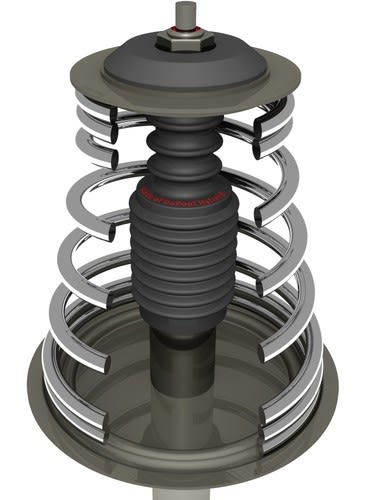 DuPont Performance Polymers is featuring an innovative automotive jounce bumper component to show how design, materials and processing can converge to deliver added performance and lower cost.
DuPont Performance Polymers is featuring an innovative automotive jounce bumper component to show how design, materials and processing can converge to deliver added performance and lower cost.The featured jounce bumper is part of a vehicle’s shock-absorber system designed to absorb impact and dampen noise, vibration and harshness (NVH).
DuPont, working with a team from Ossberger, capitalized on the flexibility attributes of DuPont Hytrel thermoplastic elastomer and a unique Ossberger blow-molding technology to simplify the component from four pieces that require subassembly to a single piece. This alone significantly reduced cost, size and improved performance.
“Materials are critical in component design and the best results happen when the three primary phases in product development – design, materials and processing – converge,” said Patrick Cazuc, automotive director Europe, DuPont Performance Polymers.

In developing this component, DuPont worked on design, using non-linear Finite Element Analysis (FEA) techniques and specialist software, as well as processing, including rapid prototyping and laboratory testing at the DuPont European Technical Centre. By using an Ossberger machine, the thickness profile was tightly controlled, facilitating optimum energy-absorbing properties with a maximum compression ratio.
These jounce bumpers made of Hytrel have been tested by automakers on a variety of vehicles over tens of thousands of kilometres. According to an independent vehicle testing institute: "Jounce Bumpers of Hytrel bring higher comfort and steering feedback, together with better road handling compared to PU (polyurethane) parts. Wheel rebound also is reduced with higher attenuation of low impacts. The front axis roll angle also is reduced."
“The new Jounce Bumper is an example of DuPont listening to market needs and developing a superior solution, while providing all the necessary collaborative support needed to bring an idea from design to commercialisation,” Cazuc concludes. “More to come on this new development.”


